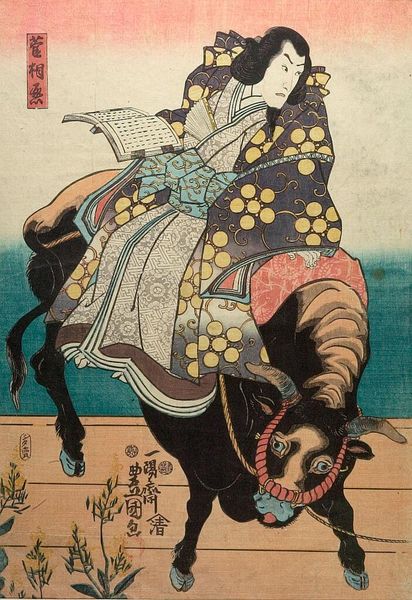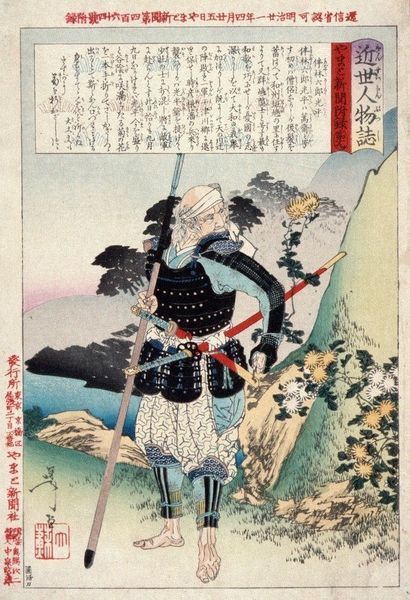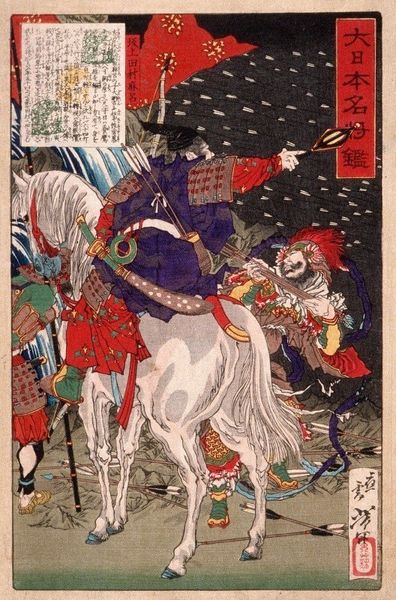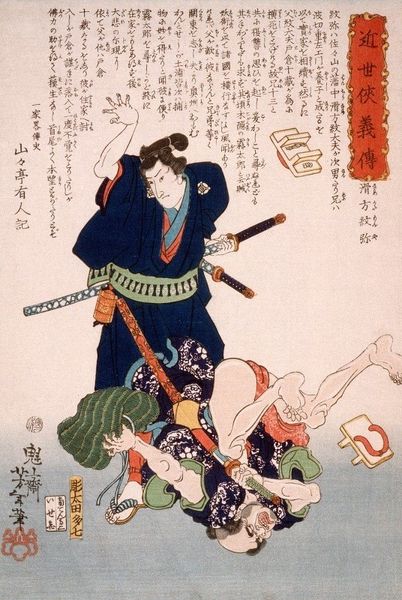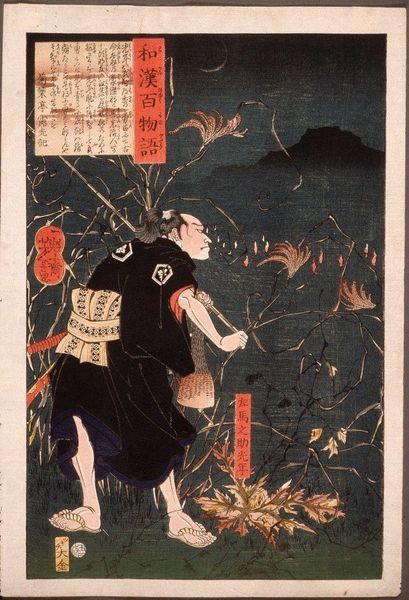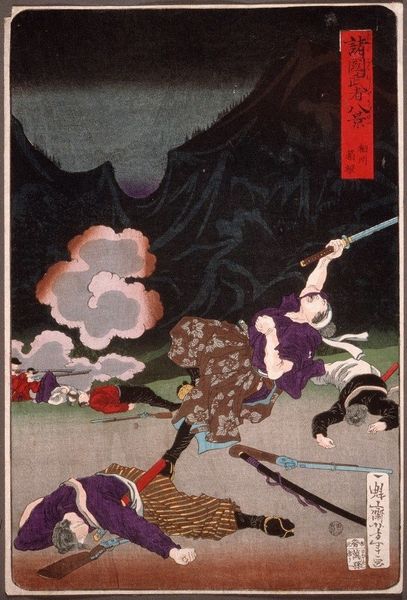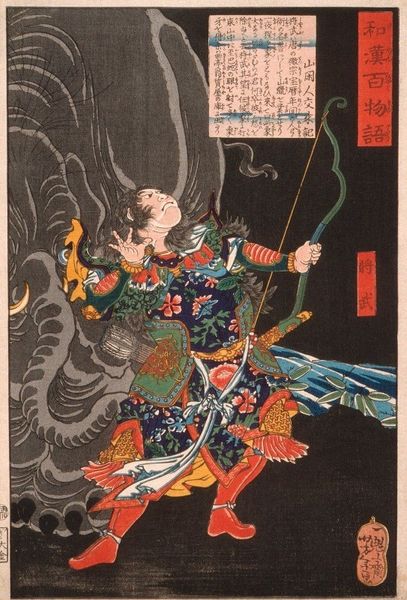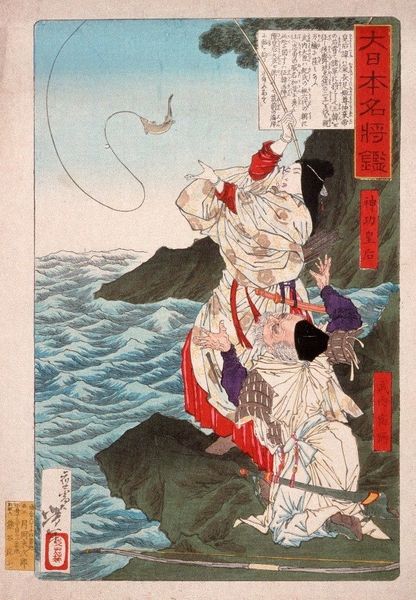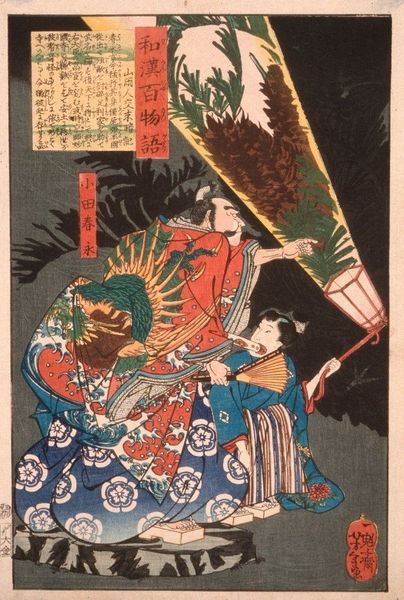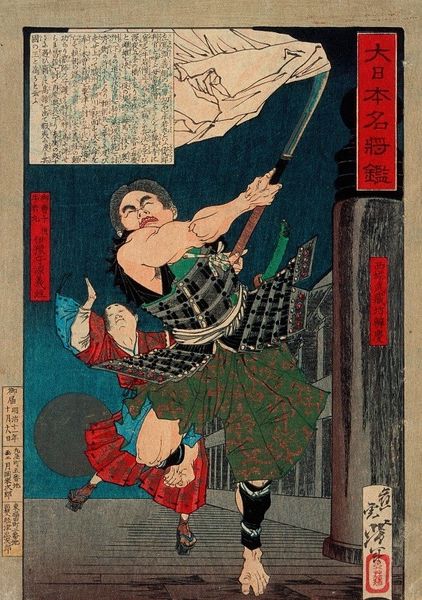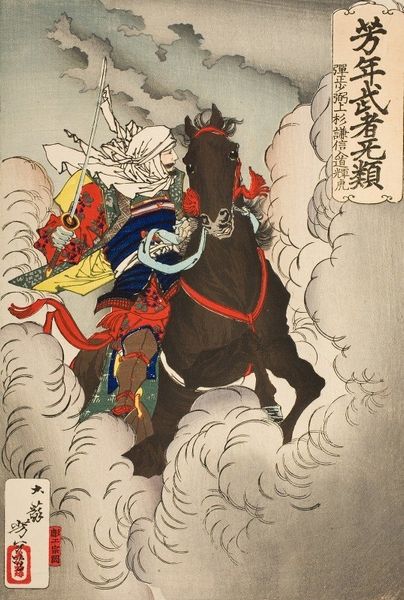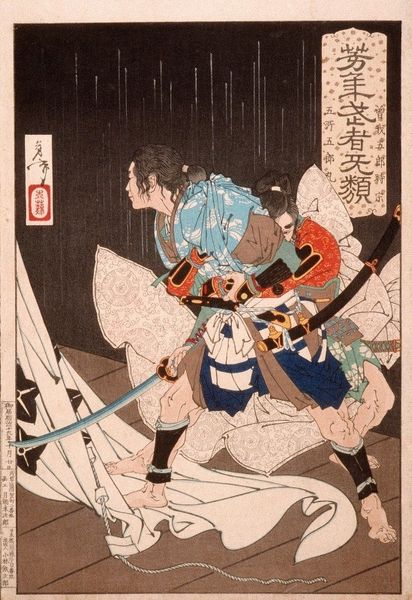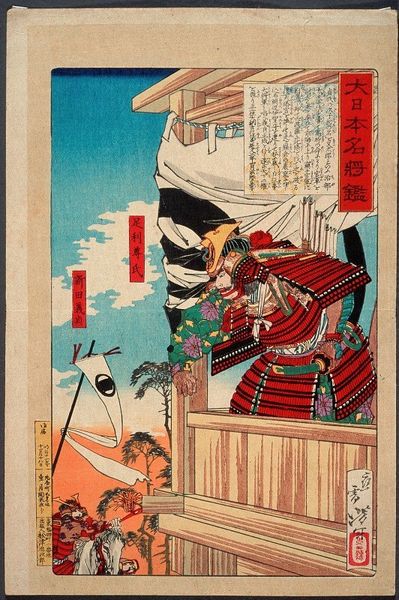
Copyright: Public Domain: Artvee
Editor: So, this is Tsukioka Yoshitoshi's "Isobayashi Taii on Horseback at Castle Gate with Falling Stones" from 1886, a woodblock print. It's intense, almost cinematic with the dynamic pose of the horse and rider against the backdrop of a crumbling castle. What historical narratives might Yoshitoshi be engaging with here? Curator: It’s tempting to view this simply as a scene of military valor, but Yoshitoshi was deeply invested in representing the societal shifts of Meiji-era Japan. This print invites us to consider the place of the samurai class during that rapid modernization. Is this a glorification or a critique? Think about who is missing: who isn’t represented, whose voices aren't being heard in the glorification of samurai culture? Editor: I hadn’t considered the missing voices. I suppose I was focused on the action and the somewhat romanticized portrayal of the warrior. Are those stones falling *on* the rider, or is he causing their destruction? Curator: Exactly. Consider those stones—are they a symbol of crumbling traditions, perhaps an indictment of the relentless pursuit of modernization at the expense of cultural heritage? Yoshitoshi masterfully uses the Ukiyo-e aesthetic to question power and the costs of progress, alluding to both destruction and perseverance, demanding a contemporary evaluation. Editor: So, it's more than just a battle scene, it’s a complex statement on identity and change, the negotiation of past traditions and current modernities, depicted through visual symbolism. I guess what struck me as a moment of action, can be unpacked into meaningful dialogues of the shifting cultural landscape of Japan. Curator: Precisely. By engaging with the historical context, we can unlock so much more in this work, questioning not just what is presented, but why, and what societal tensions Yoshitoshi may have been pointing toward. It’s not about celebrating a historical military actor, but rather scrutinizing the impact on broader populations. Editor: That makes me appreciate Yoshitoshi’s skill, to convey meaning beyond just an illustrated image. Thanks!
Comments
No comments
Be the first to comment and join the conversation on the ultimate creative platform.
